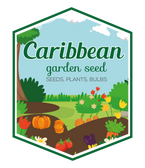
Flowers seed -Blue alpine ,Sea Holly
FAST & FREE SHIPPING
Over 90% of our orders are processed and ship out by next business day.
We are currently processing and shipping most orders within 1-3 business days. (backorders not included) Due to high demand during the peak months of January to May, orders may require additional time for packaging /shipment.
Free shipping for orders over $54.95. Excludes live plants, fresh products And Stackable Black Plastic Nursery Crate
Shipping and handling charges will cover outbound freight and packaging materials. Fees are applicable to all orders, based on total order value pre-tax. Expedited services can be selected at Checkout with extra fees.
- Free shipping to lower 48 states on orders $54.95+
- (Most Items), excluding live plants, plant bulbs, and black plastic nursery crate.
- Safe Seed Pledge
- Satisfaction Guaranteed
- Select your desired size and/or color from the available options.
Beds, borders, and cottage gardens alike will benefit from the addition of Blue alpine and Sea Holly. These versatile flowers can be planted as single specimens or in small groupings of 3-6 plants, or even en masse. They thrive in dry, sun-baked beds and make for beautiful cut flowers that also dry well, making them a long-lasting addition to any floral arrangement.
Eryngium alpinum, commonly called alpine sea holly, is a somewhat coarse, stiffly-branched, taprooted, rosette-forming herbaceous perennial that typically grows on upright stems to 25-32” tall with a spread to 18” wide. It is native to subalpine rocky areas and moist pastures up to 6500’ in elevation in central and southeastern Europe.
Strong, solitary, upright stems are topped from mid-summer into fall (July-early October) with single, cone-shaped, thistle-like, blue flower heads (to 2” long) densely packed with tiny blue flowers. Each flower head is subtended by a collar of 12-18 ornamentally attractive, bristly, finely-divided, somewhat soft-to-the-touch blue bracts which extend outward and upward from the base of the flower head. Plants feature ovate, spiny-toothed, heart-shaped basal leaves (to 3-6” long) and palmately-divided 3-lobed upper stem leaves. Foliage is green near the base of the plant, but upper leaves, upper stems, flowers and flower bracts are bluish.How To
Grow Sea Holly Blue From Seed: Eryngium Sea Holly self-sows readily by dropping its flower seeds on the ground, but it is not invasive. If the Sea Holly seeds are started indoors, transplant the seedlings where you want them to grow when they are quite small.
The Eryngium plants have taproots, so they won't transplant well once mature; however, these taproots make them quite resistant to drought. Sea Holly plants attract bees and butterflies, and they are a great plant for a low water garden. Eryngium seeds can be started directly outside in the spring after frost season has passed.
From Sowing to Germination: 4 - 8 weeks, to Transplanting: 4 - 8 weeks, and finally to Potting: 6 - 10 weeks.
Use container sizes of 1-2 plugs per 11/12 cm (4 1/2") or 2-3 plugs per 15 cm (6"). To vernalize, a recommended approach is to maintain an average daily temperature of 40°F (5°C) for 6-12 weeks. While not essential for flowering, cold exposure may enhance quality. Forcing may be utilized following vernalization, with daytime temperatures of 60° - 65°F (15° - 17°C) and 16 hours of continuous lighting. During the winter's short days, provide a 4-hour night interruption lighting between 10:00 p.m. and 2:00 a.m. Some later-flowering species can be forced in 14 - 16 weeks and
HOW TO GROW GUIDE
LET OUR CUSTOMER SPEAK FOR US

![[Seeds] - Caribbeangardenseed](http://caribbeangardenseed.com/cdn/shop/files/gift-card-gift-card-1_1024x1024_dfa857db-9150-4315-a362-7f0bb3fb9c47_60x28.png?v=1722895789)







